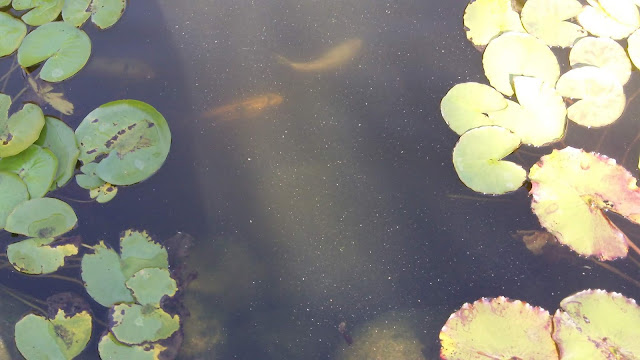8 Steps to Prep Your Pond for Winter
Hopefully you've had a great season with your pond! It's now time to start prepping for the colder months. This doesn't have to be a daunting task! Read our easy 8 steps below to get your pond ready before cold weather arrives!
Step 1. Keep it clean -- Keep leaves out and remove decaying plant foliage.
Not only will decaying organic matter feed algae next spring, but it will also rob pond water of oxygen which your fish need to thrive. Keep a leaf net on your pond until the leaves are down and cleaned up. Cut back aquatic plant foliage. Remove and discard any tropical water plants.
Step 2. Catch up if you didn't maintain your pond this summer.
Step 3. Continue to add Spring and Fall Prep beneficial bacteria.
Step 4. Stop feeding your fish.
Okay, okay... this one is tough. But your fish do not need to be fed during the late fall, winter, and early spring. They won't even want to eat! Once the water temperature drops below 55 degrees you should not feed them. Even if we have a warm spell over the winter and your fish begin to move around -- don't do it! You could be risking their health! Read more about fish and winter health here.
Step 5. Move your air stones.
Step 6. Have an deicer for backup.
 |
| Here's a floating pond de-icer keeping a hole open in the ice for the fish to breathe. |
Step 7. Have a plan for topping off your pond during winter.
It's not as easy to add a couple inches of water to your pond in winter! You'll need a thawed hose and a frost-free spigot or a long hose and a kitchen sink if need be! Don't be surprised at the amount of water you may need to add in the winter. As ice begins to form, that water is no longer in the pond but on top of the pond! When a cold spell is coming, get your pond topped off before it arrives.
If topping off your pond sounds like too much work, then consider shutting off your pump for the winter. See the next step.
Step 8. Decide if you want to run your pond during the winter or shut it down.
Ponds and waterfalls are beautiful in the winter! If you can view yours from inside and have an easy way to fill it over the winter, then leave it running. But there are certain times you should definitely shut it down for winter:- If you will be away from your home for a few days or more.
- If it will be difficult to add water.
- If your pump sits at the bottom of your pond. (If you don't have a skimmer, you don't want to disturb the warm water at the bottom of the pond.)








Comments